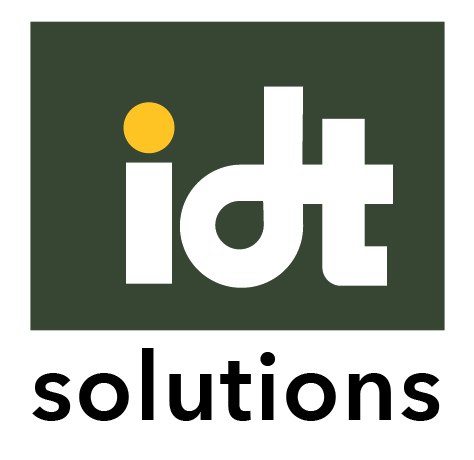It’s quite likely by now that you’ve had some sort of top level directive to migrate your infrastructure to the cloud. To the CEO, this might sound like a simple straightforward task. But you know the risks, the complications and the dangers to the business. Get it wrong and the consequences could be catastrophic.
Cloud Migration Defined
When move data and applications from on-premises to the cloud, this process is called cloud migration. The process may involve moving all your applications and services, or it may take a slower approach where some applications are moved to the cloud, while others remain on-premise. This approach is called a hybrid migration. In either case, a cloud data warehouse can provide you many benefits over your on-premise solution.
Clearly it is necessary to begin with a gap analysis, though this can be easier said than done. Understanding a new architecture, which will look so radically different to the one currently in operation, is no mean feat, this can also mean that NOT all applications are suitable for migration to the cloud.
Painting a Picture of the Cloud
Designing a future state is a tricky task at the best of times, and when moving the entire location of your infrastructure it throws up an extensive set of challenges: Will everything run as it did before? What will happen to your costing models? Do IT staff need retraining? Will other applications need to be onboarded?
Enterprise architecture depicts both the desired future state and the organization’s current iteration. Effectively implemented it streamlines cloud migration and manages all stages of its adoption, including strategically collating information about the as-is state, right through to defining the overarching goal and vision.
Modeling activities underpin these projects and map out different stages to establish links, facilitate gap analysis and demonstrate the impact of change. The richer the picture of nodes and relations, the more business analysts are able to manage risk. Put another way, the organization can use these diagrams to retake control of change initiatives as it considers how services should be architected in the cloud.
Ensuring the accuracy of these models necessitates a repository, which stores objects and artifacts, halting the practice of creating disparate diagrams with incorrect relationships, whereby solutions won’t be identified, and opportunities for reusing technology and sharing services are missed. With the repository, by contrast, enterprise architects gain accurate insight into the future state cloud architecture and can reuse the information created in diagrams to render reports. Acting as a single source of truth, the repository enables multiple users to view the same content and collaborate on models, diagrams, catalogues and documentation.
Key Advantages to Moving to the Cloud
Companies move to the cloud for many reasons. Below are just a few of the ways in which moving to the cloud can be a winning decision for your organization.
- Cost-effective. When you maintain your own data warehouse onsite, you are responsible for maintaining the infrastructure and workforce to support every aspect of your warehouse. But when you move to the cloud, you can get the benefit of world-class infrastructure while saving money.
- Simplified. Much of the complexity of a data warehouse can be handled by a team of product experts at a cloud data warehouse provider. This means your employees can focus on the things that really matter, like growing your business.
- Scalable. One of the biggest advantages of the cloud is scalability. Whether you are scaling up quickly or slowly, a cloud data warehouse can accommodate you.
- Secure. Cloud data warehouses are responsible for providing services that meet common compliance requirements, including certifications like SOC 2, ISO27001, HIPAA, and PCI. When you move to the cloud, a team of security experts is part of the bargain.
Types of Cloud Migration Tools
You have a few options for the types of tools you can use to migrate to the cloud.
- Open source: Open source solutions can be customised at just about every level, and they are often free or low-cost. The downside is that you will likely need experienced staff to make the customisation.
- Batch processing: Batch processing tools work well in environments where large amounts of data are moved or processed at regularly scheduled times (often nightly, when network and equipment use is low).
- Cloud-based: Cloud-based migration tools typically offer the most seamless experience, tying together data and the cloud with connectors and tool sets designed for that specific task.
Migration Challenges
The larger and more complex your company’s infrastructure, the harder it will be to move to the cloud. Like any big change, there are challenges involved in moving to the cloud. One thing that needs to be kept in mind and upfront is the cloud migration is a marathon and not a sprint. Typically organisations that try to do this in a “sprint” type of methodology usually and up failing, this can be caused due to not fully understanding the current infrastructure that they have in place, and this can result in project budget blow out.
Re-planning your data model
You will almost certainly need to change your data model. Different cloud data warehouses support different types of schemas. In addition, the data types may be different. There are tools available to support semi-structured data. You will need to discuss your migrations options with your data warehouse provide to see what they can offer and/or options are available to you.
Planning for security
You are probably concerned about how you will maintain secure data when you move it to the cloud where you have less control. Security is a concern during and after migration. What’s more, sensitive data is often subject to compliance requirements, which can be hard to support during the migration process.
Moving stored procedures
If you use stored procedures, you may be surprised to find out that this solution isn’t commonly supported in cloud environments. Migrating these stored procedures to a cloud data warehouse can be challenging.
Cloud Models
One action that needs to be done upfront is the decision on what type of cloud model is required to align the organisation to. As there are three cloud models and all have there pros and cons. Available option on cloud models are:
Public cloud
Public clouds are the most common way of deploying cloud computing. The cloud resources (like servers and storage) are owned and operated by a third-party cloud service provider and delivered over the Internet. Microsoft Azure. AWS are examples of a public cloud. With a public cloud, all hardware, software, and other supporting infrastructure is owned and managed by the cloud provider. In a public cloud, you share the same hardware, storage, and network devices with other organizations or cloud “tenants.” You access services and manage your account using a web browser. Public cloud deployments are frequently used to provide web-based email, online office applications, storage, and testing and development environments.
Advantages of public clouds:
- Lower costs—no need to purchase hardware or software, and you pay only for the service you use.
- No maintenance—your service provider provides the maintenance.
- Near-unlimited scalability—on-demand resources are available to meet your business needs.
- High reliability—a vast network of servers ensures against failure.
Private cloud
A private cloud consists of computing resources used exclusively by one business or organisation. The private cloud can be physically located at your organisation’s on-site datacenter, or it can be hosted by a third-party service provider. But in a private cloud, the services and infrastructure are always maintained on a private network and the hardware and software are dedicated solely to your organisation. In this way, a private cloud can make it easier for an organisation to customise its resources to meet specific IT requirements. Private clouds are often used by government agencies, financial institutions, any other mid- to large-size organisations with business-critical operations seeking enhanced control over their environment.
Advantages of a private clouds:
- More flexibility—your organisation can customise its cloud environment to meet specific business needs.
- Improved security—resources are not shared with others, so higher levels of control and security are possible, along with data privacy and data sovereignty.
- High scalability—private clouds still afford the scalability and efficiency of a public cloud.
Hybrid cloud
Often called “the best of both worlds,” hybrid clouds combine on-premises infrastructure, or private clouds, with public clouds so organisations can reap the advantages of both. In a hybrid cloud, data and applications can move between private and public clouds for greater flexibility and more deployment options. For instance, you can use the public cloud for high-volume, lower-security needs such as web-based email, and the private cloud (or other on-premises infrastructure) for sensitive, business-critical operations like financial reporting. In a hybrid cloud, “cloud bursting” is also an option. This is when an application or resource runs in the private cloud until there is a spike in demand (such as seasonal event like online shopping or tax filing), at which point the organisation can “burst through” to the public cloud to tap into additional computing resources.
Advantages of hybrid clouds:
- Control—your organisation can maintain a private infrastructure for sensitive assets.
- Flexibility—you can take advantage of additional resources in the public cloud when you need them.
- Cost-effectiveness—with the ability to scale to the public cloud, you pay for extra computing power only when needed.
- Ease—transitioning to the cloud doesn’t have to be overwhelming because you can migrate gradually—phasing in workloads over time.
- Legacy Applications—were organisation has legacy applications that are not compatible in a full cloud environment.
Make a Plan for the Worst-Case Scenario
A big benefit of moving to the cloud is the increased resilience you’ll have in the event of a worst case scenario. Because your data isn’t stored exclusively on-site, you’ll still have access to it even if your physical location is inaccessible.
If your business is damaged in a natural disaster, for example, you need to have a plan for how you’ll respond. Are you still going to pick up the phone? If so, what will you tell your customers?
What You Can Do Right Now
Cloud migration can and will take some work and remember its a marathon and not a sprint, but it if done correctly can also pay big dividends.
Here’s what you need to think about if your organisation is looking at making the move.
- Look at what you’re already using, and document your business processes.
- Review your current architecture, and see if you have any legacy applications the must run on-premises and cannot be migrated to the cloud.
- Do a thorough gap analysis of your infrastructure, application and business processes
- Determine what cloud model to use Public Cloud, Private Cloud or Hybrid Cloud
- Look very closely at security, and data privacy and sovereignty, data and privacy compliance
- Carefully evaluate your vendors
- Do they have a datacenter in region, this will be required if data privacy, compliance and sovereignty are of a major concern
- Scrutinize your SLAs. The partnership with your cloud hosting provider will only be as good as the SLA agreement.
- Manage your identities, who has access to what and when, the nuts & bolts of the environment.




